Razer Blade 16 vs Asus Zephyrus G16 2025 edition: We're potentially picking the best gaming laptop of this generation
A clash of the gaming laptop titans.
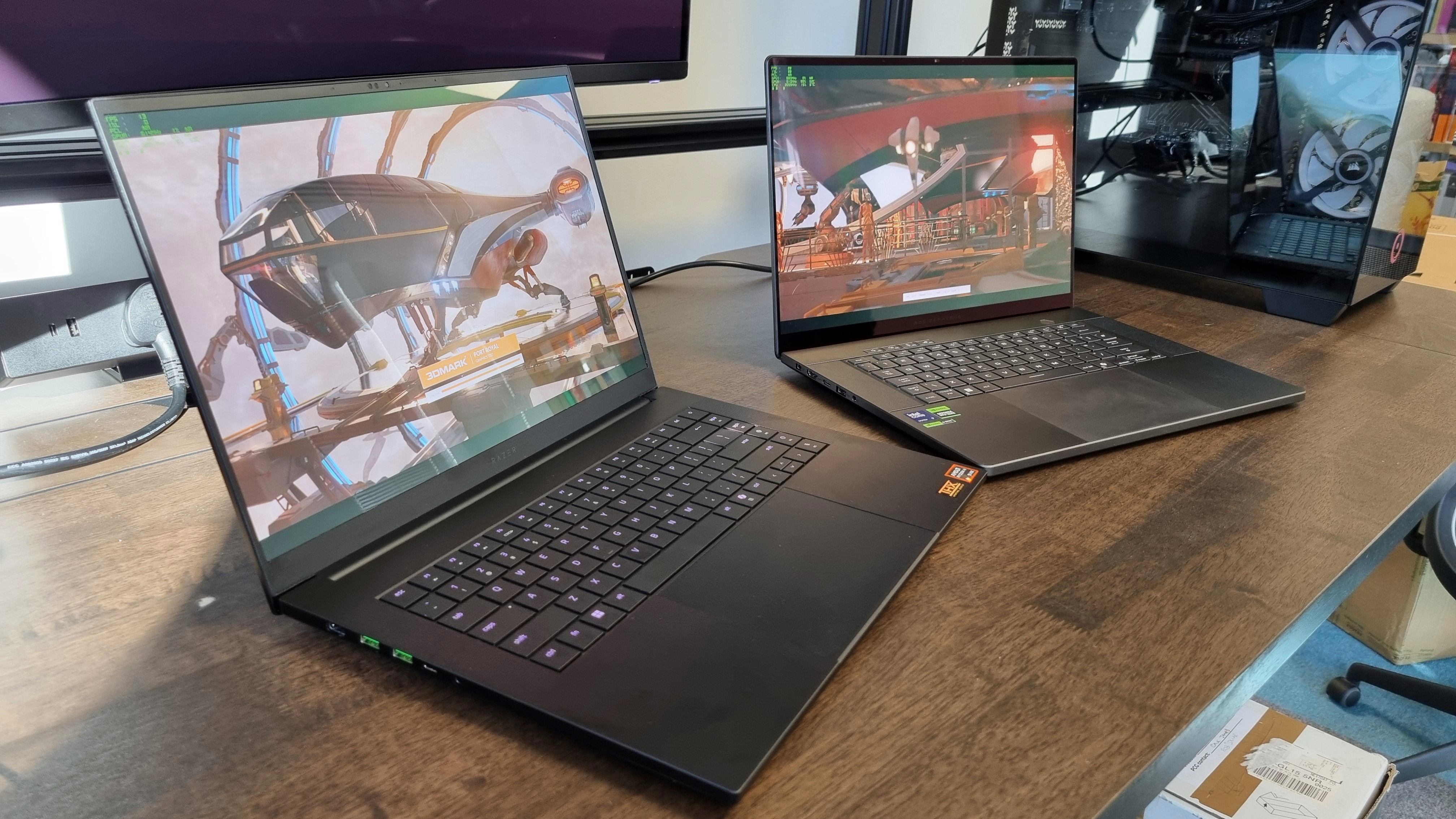
Earlier this week, my hardware overlord Dave James and I had something of a gaming laptop dust-up. Each of us brought our top contenders so far from the latest, RTX 50-series generation into the office, took them into a quiet corner, and set them against each other to find out which was best.
I thought I was in with a pretty strong chance, to be honest. My chosen machine (or at least, my loaned review sample) was the new Asus ROG Zephyrus G16, the updated version of a laptop we saw fit to crown the best gaming laptop overall. Dave, however, unleashed the 2025 version of the Razer Blade 16, a thinner, edgier update to the Blade line that's been setting his hair on fire (metaphorically) for the past few weeks.
Now the dust has settled, a clear victor remains: The Razer Blade is back, and the little G16, after a valiant fight, is left on its aluminium-framed knees.
Our particular Blade comes fully-featured with the top spec 175 W RTX 5090 mobile GPU, whereas the Asus makes use of a 120 W RTX 5080. So, it was never going to be about a direct performance comparison—although for what it's worth, the low-power variant of the RTX 5080 gives a darn good account of itself in the face of the mighty mobile mega-GPU.
No, instead we decided to see which of the two we'd actually buy. With our own money. Y'see, gaming laptops are special things. If you're buying a gaming PC, you might tolerate a slightly ropey chassis, or a cacophony of fan noise. After all, it's likely going to sit under your desk doing its thing for the next few years, and raw performance is probably your top concern.
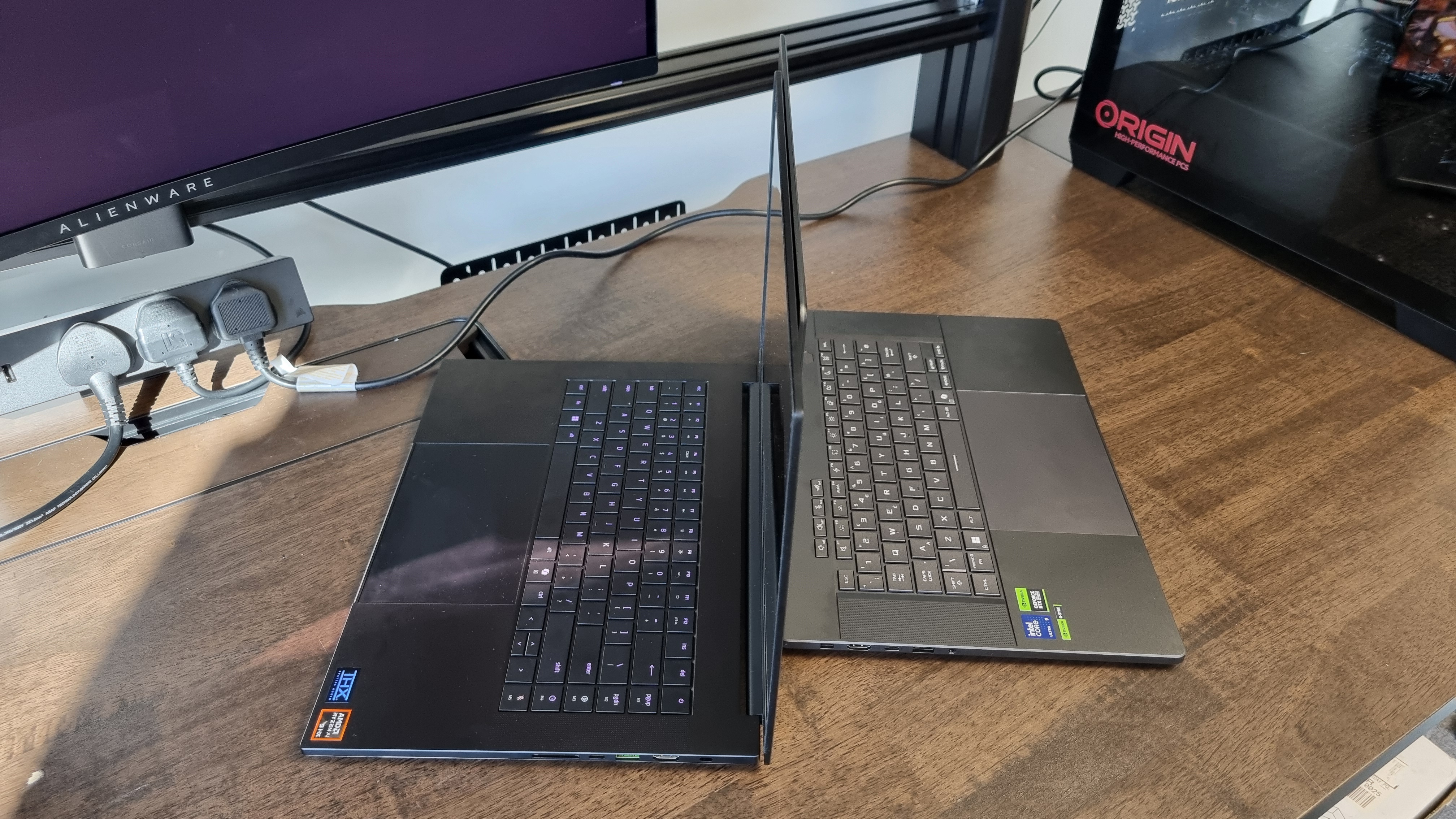
All photos: The Razer Blade 16 on the left, the Asus ROG Zephyrus G16 on the right.
But a gaming laptop has to live with you. Ideally, it needs to slip into your bag at a moment's notice. It might join you on your next flight, or stay up in bed with you for a bit of late-night YouTube watching. You might use it for a bit of Rimworld on the train, then plug it into your monitor when you get home for some proper 4K gaming.
The biggest gaming news, reviews and hardware deals
Keep up to date with the most important stories and the best deals, as picked by the PC Gamer team.
A good gaming laptop is more than a mere machine: It's a companion, a trusty friend you should be able to bring with you through your day-to-day life as well as use at home.
Both laptops are slim, that's for sure. You could quite happily carry either on your back all day long without complaint. The Razer is slightly heavier, at 2.14 kg to the G16's 1.95 kg weight, but in practice, I don't think you'd notice. The Blade is also slightly larger overall, with a taller bottom deck.
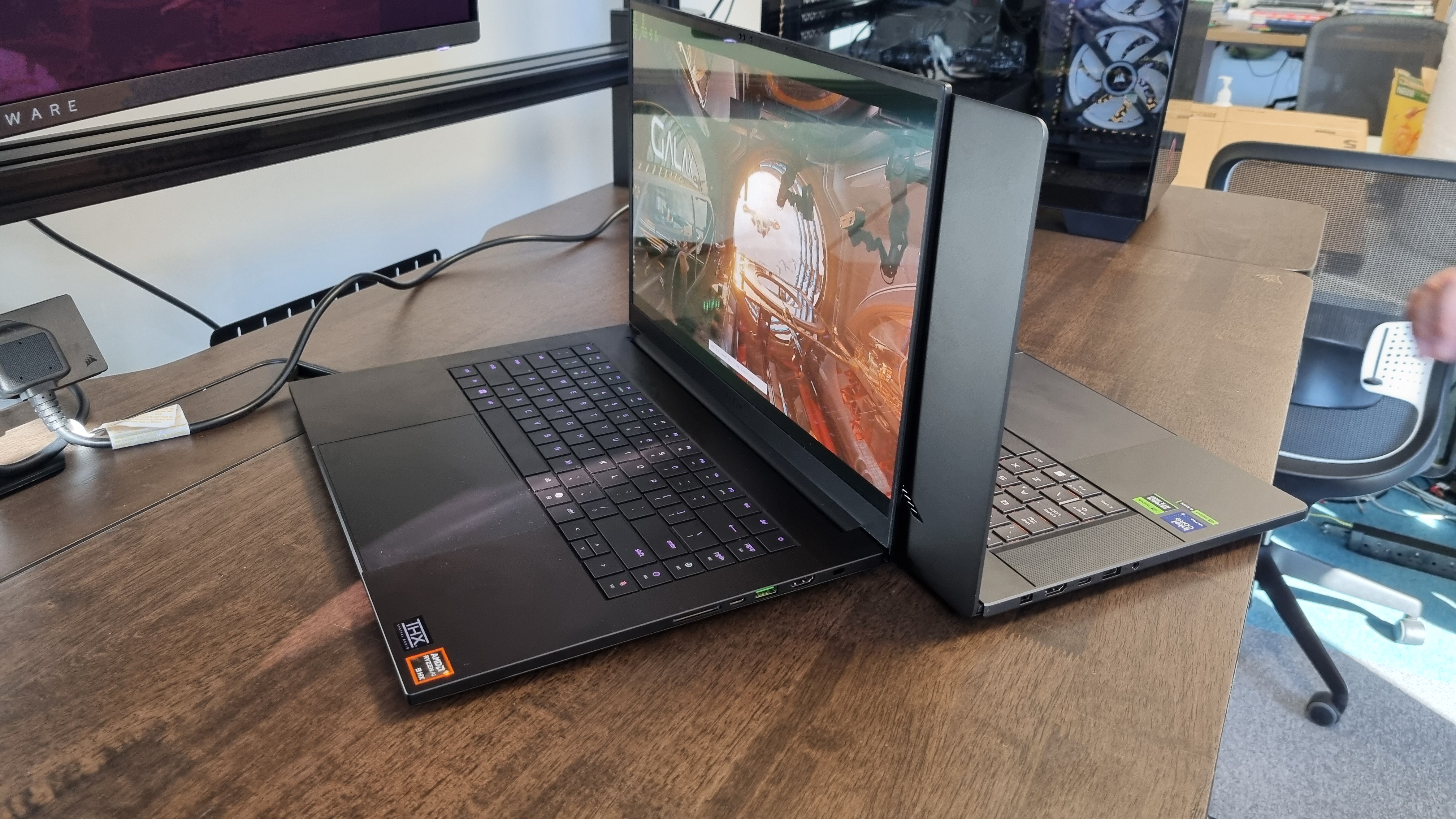
Both, however, immediately remind me how far gaming laptops have come in recent years. While chonky gaming laptops are still most certainly a thing (the Gigabyte Aorus Master 16 springs to mind with its substantial chassis), we're now living in a world where portable gaming power doesn't have to mean carrying a slab of granite around with you all day.
So, it's a draw on portability, with perhaps the G16 edging slightly ahead. Next up is a display comparison, and for this we set them side by side and ran HDR video tests to see which screen was best.
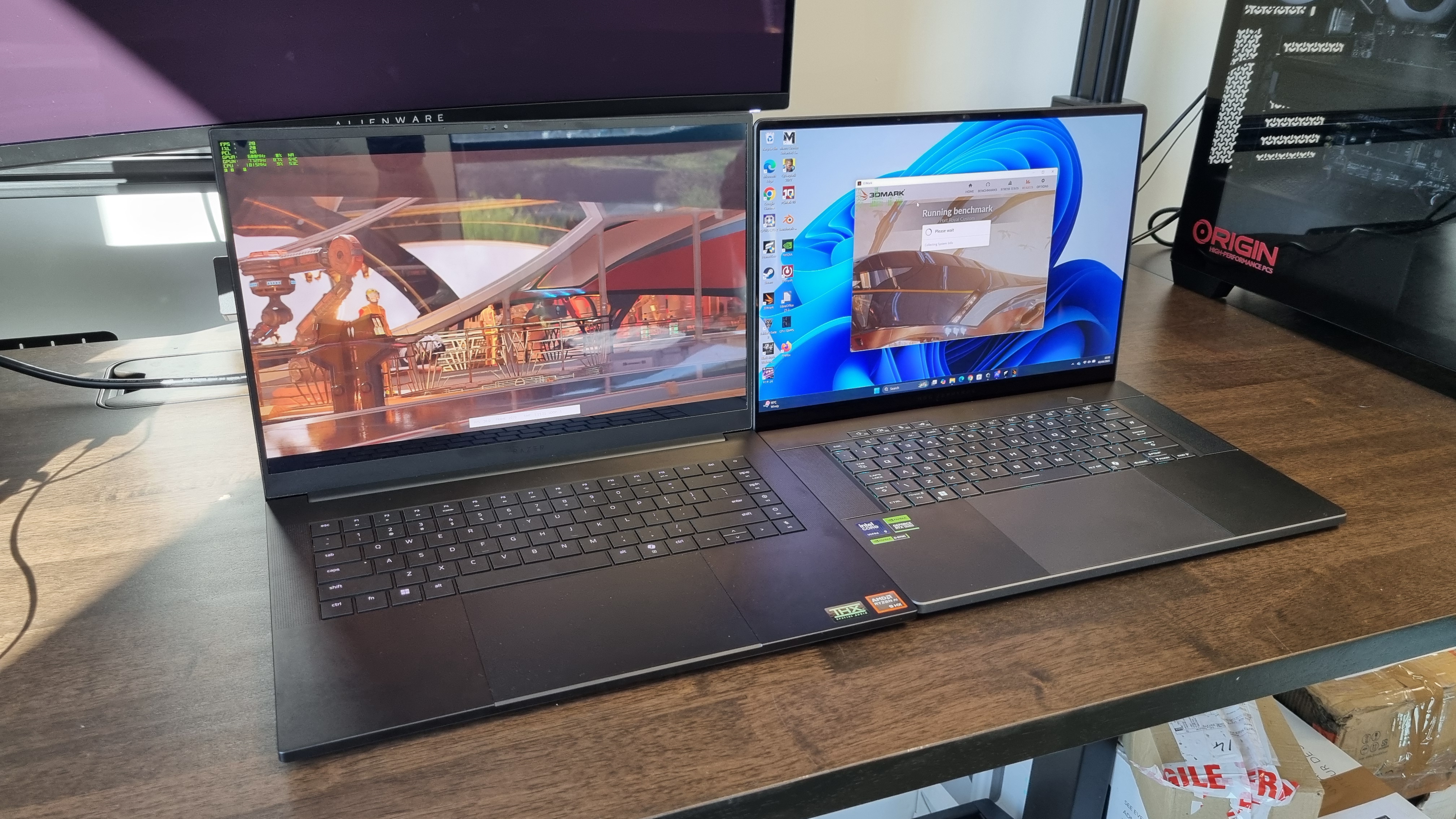
While the G16 has a fantastic 240 Hz 1600p OLED display, it quickly reveals itself to be a lesser viewing experience than the same-specced panel in the Razer machine. HDR highlights look much brighter on the Blade's screen, and colours are noticeably richer. Both panels are great, no doubt, but sat side by side it's clear the Blade is winning this particular battle.
So, onto fan noise. A point of contention for all gaming laptops, if I'm honest. None of them are quiet under heavy load, but this particular fight was the one I was most nervous about. The Intel Core Ultra 9 285H chip in the G16 likes to run hot, and I noticed during my testing that it creates a high-pitched whine when the CPU is really pushed.
The Blade, with its AMD AI 9 HX 370, doesn't. It's still not quiet during a Time Spy Extreme run, naturally, but the absence of that audible top note makes it a much more pleasant machine to listen to under duress. One of the great joys of a gaming laptop, I've found over the years, is that you can sit on the sofa next to your nearest and dearest and do a bit of gaming while they watch the TV. Together, but enjoying different media in happy harmony.
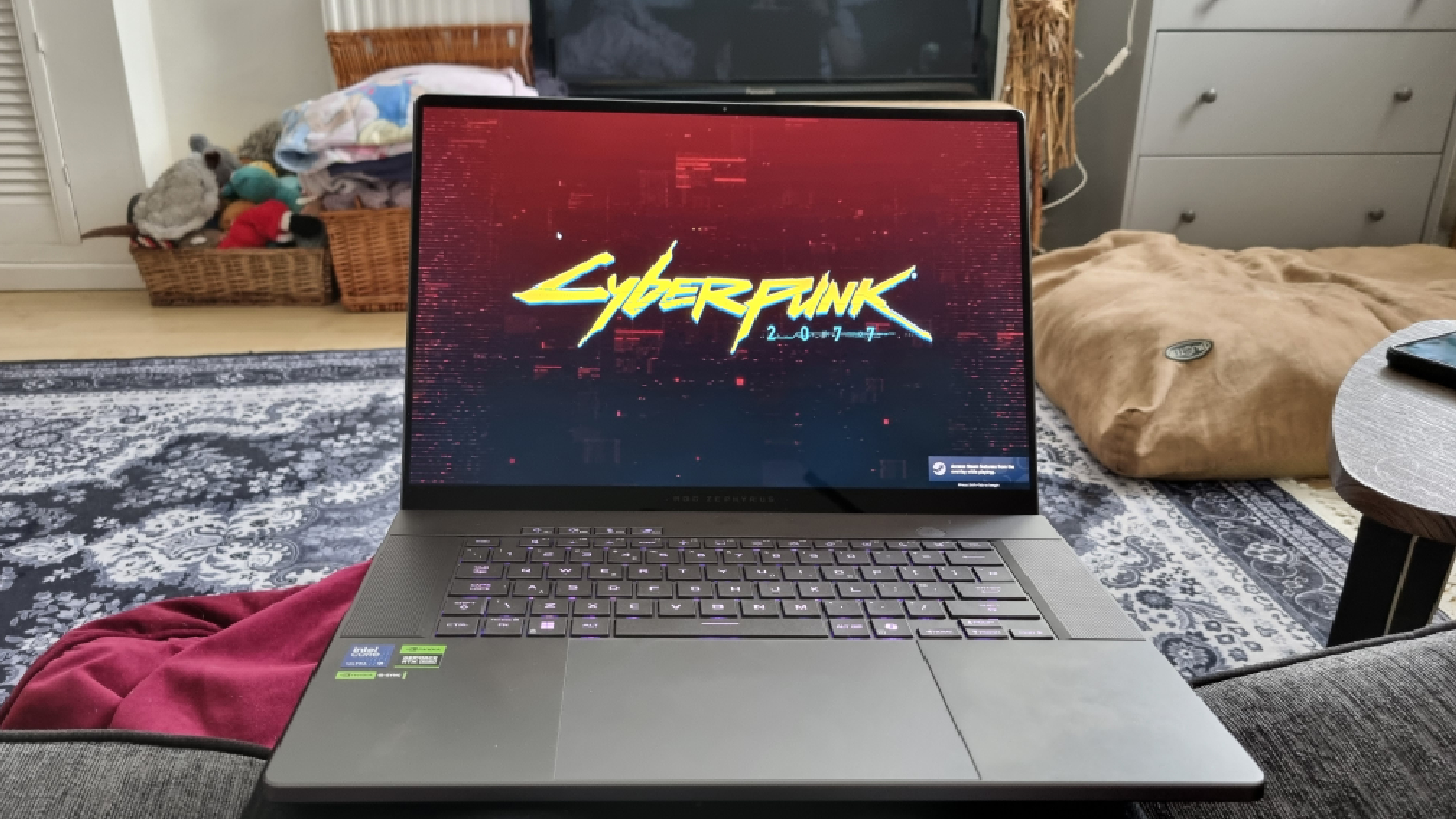
You wouldn't want to with the G16. I can think of few things more likely to get the remote thrown at me than spinning up the Asus machine's fans for a bit of Baldur's Gate 3 while my partner watches that reality TV series about vapid people on luxury yachts. You know the one. I won't speak its name here.
Battery life? The Blade wins again, just. Both machines can deliver a surprising amount of uptime while gaming thanks to Nvidia's BatteryBoost tech, but the Blade edges it out.
And then we come to the thorny question of money. While we don't yet have confirmed US pricing for the exact model of G16 I'm testing, the 64 GB version is up on Asus' store page for $3,600. The UK 32 GB version, however, is £3,400, and I'd expect the US pricing to be about the same.
Razer seems to have taken down its pricing for the RTX 5080 Blade (potentially in response to the new tariffs, I'd wager, which seems to be throwing hardware pricing for a loop at the moment) but it was previously listed on Razer's site for $3,500.
The 2025 Blade 16 has sharpened its talons, been to the gym, and come back from its training montage looking like a gaming laptop that can take on all contenders
So it's difficult to do a direct price comparison at the moment. But given these laptops are in direct competition with each other, I'd say it's likely that the two will battle it out over pricing for equivalent models in the next few months. Razer told me the new Blades would be "aggressively priced" at CES this year, and that seems to be playing out in practice so far.
Whatever. While the pricing remains a question mark, once you're up into the lofty heights of $3,000+ for a gaming laptop, the odd $100 difference becomes a diminishing factor. The simple fact is this: While the Asus ROG Zephyrus G16 2025 is still a very desirable gaming laptop, I have to admit that with my own personal funds, I'd buy the Razer instead. Even if it does end up being a bit more expensive.
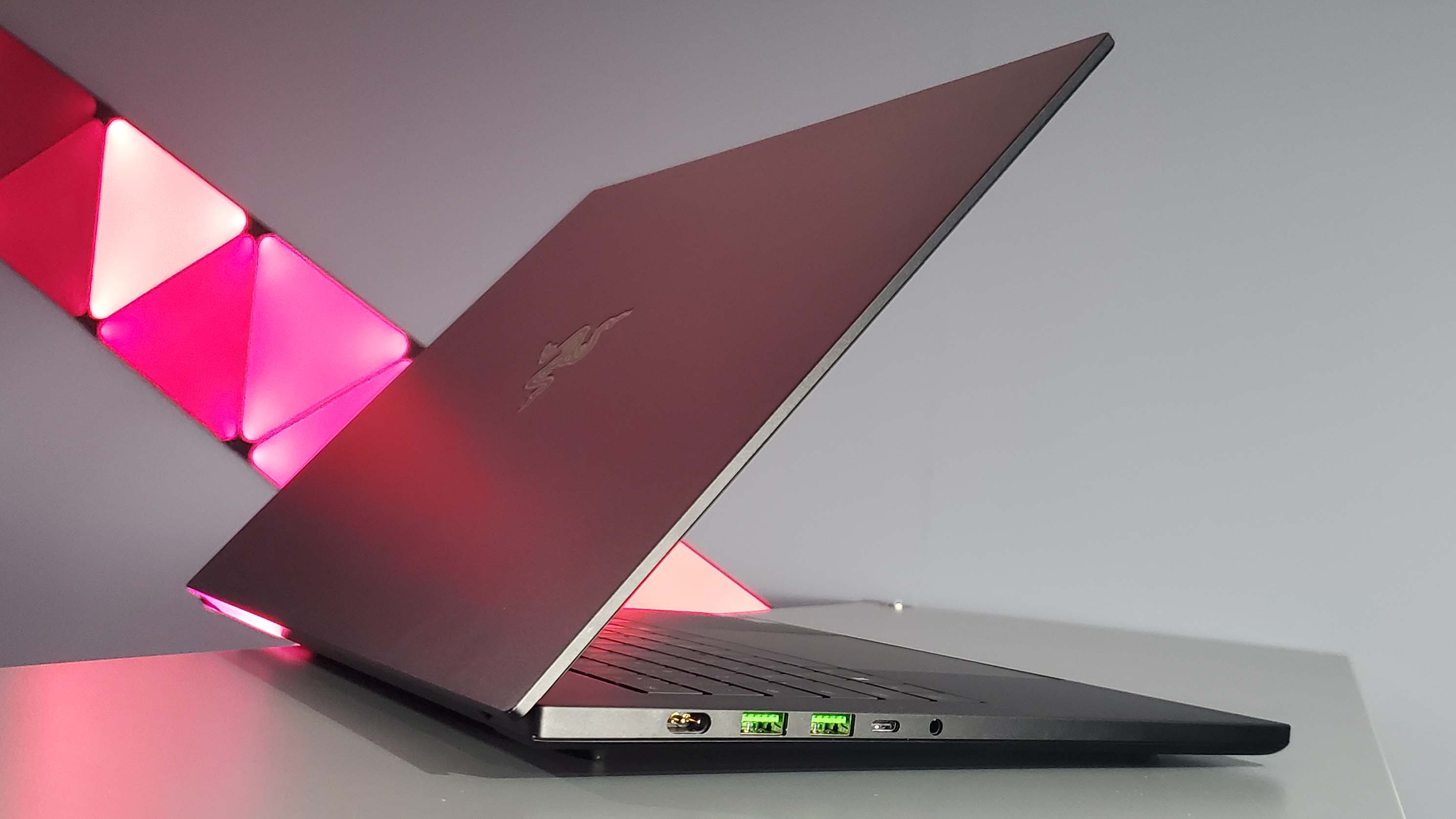
And that's not because Dave is my boss. No, we've had friendly disagreements over many hardware opinions over the years, and I know he'd back me up if I stalwartly defended the G16 to the hilt. But sticking these laptops side by side, it's clear that the Blade 16 is the one you'd want to live with—and the gaming laptop I'd spend my actual money on if I was buying a mega–mobile-machine right now.
Which is a hell of a turnaround for Razer. We complained last year that the Razer Blade lineup had lost its edge, and it appears that Razer thought so too, as it's built a gaming laptop that looks and feels ultra-premium, ultra-desirable, and very easy to live with, in the face of stiff Asus competition.
The 2025 Blade 16 has sharpened its talons, been to the gym, and come back from its training montage looking like a gaming laptop that can take on all contenders and come out on top.
For now, at least. We're at the tip of the spear for RTX 50-series gaming laptops at this point, and manufacturers like Asus, Gigabyte, MSI and more will have new models to throw into the ring over the next few months. For now, though, the Razer Blade 16 reigns supreme. And even I, the biggest G16 fan on the team, have to admit it's the one to beat.

Andy built his first gaming PC at the tender age of 12, when IDE cables were a thing and high resolution wasn't—and he hasn't stopped since. Now working as a hardware writer for PC Gamer, Andy's been jumping around the world attending product launches and trade shows, all the while reviewing every bit of PC hardware he can get his hands on. You name it, if it's interesting hardware he'll write words about it, with opinions and everything.
You must confirm your public display name before commenting
Please logout and then login again, you will then be prompted to enter your display name.

